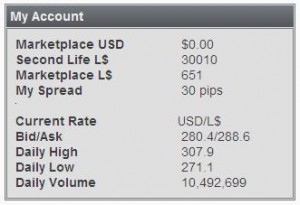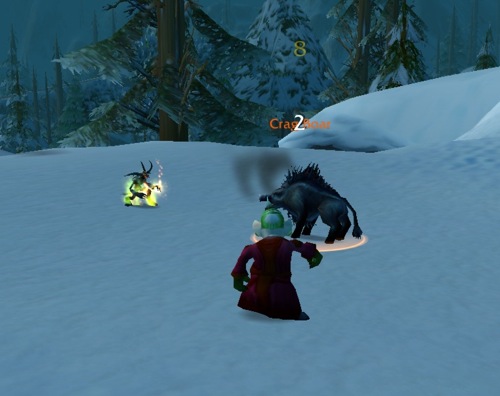 I have to say I was a little bemused at the announcement by Linden Lab of their faith in the strength of the Linden dollar, after a selling run over the past 24-48 hours. On checking the current rate, it shows a 10.4 million Linden exchange throughput with the exchange rate deteriorating to 307.9 Lindens per US dollar at its worst but now bouncing back to 288 at time of writing.
I have to say I was a little bemused at the announcement by Linden Lab of their faith in the strength of the Linden dollar, after a selling run over the past 24-48 hours. On checking the current rate, it shows a 10.4 million Linden exchange throughput with the exchange rate deteriorating to 307.9 Lindens per US dollar at its worst but now bouncing back to 288 at time of writing.
Based on a rough benchmark of 285 or so (which is around half-way between today’s low and average highs over recent months), that’s a less than 10% decline. Sure the volume is up, but did it require a full expression of confidence? Like any such expression, it can cause concern rather than provide reassurance. It also arguably shows a lack of confidence in the cohort of veteran Second Life residents who are on the whole likely to sit through any short-term fluctuations like this.
I had a brief chat to Tateru Nino this afternoon and she made the great point that supply of Linden Dollars on the exchange does tend to rise when there’s a decline of faith in Linden Lab – it’s not a lack of faith in the currency itself. This has been acknowledged to some extent in Linden Lab’s announcement, but perhaps a better tack might have been to provide some more transparency around its recent changes. There’s also another angle that could have been taken: that any fluctuation in the exchange rate can bring benefits as well as challenges. If any government expressed confidence in its currency every time it fluctuated 5-10%, there’d potentially be a lot more fluctuations.
Expressing faith in any currency can set alarm bells ringing, so here’s hoping for some more information in coming days to show that faith as justified. For mine, I did log in to look at buying some Linden Dollars if the decline had been significant. That’s the type of reaction that you’d expect from a Second Life resident with a longer-term view, who’s also happy to make a buck 😉
 Over the past year, the hype around virtual goods as the next big thing has continued unabated. Like the hype surrounding virtual worlds, it’ll eventually ease off, but underneath that is the reality of the very significant growth that is continuing. Two recent announcements have really emphasised that growth.
Over the past year, the hype around virtual goods as the next big thing has continued unabated. Like the hype surrounding virtual worlds, it’ll eventually ease off, but underneath that is the reality of the very significant growth that is continuing. Two recent announcements have really emphasised that growth. 
Recent Comments